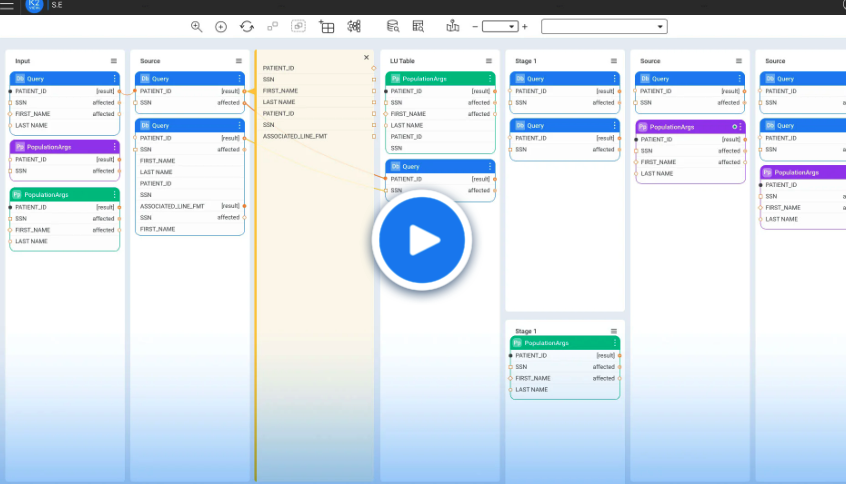AI virtual assistants are software programs that use AI to perform tasks on demand. Companies use them to enhance customer service and boost productivity.
A brief history of virtual assistants
Non-AI virtual assistants have been around for decades, in fact, as far back as the 1960s. For example, the ELIZA chatbot simulated interactive human-machine conversation by using a pattern matching and substitution methodology. And PARRY, released in 1972, used a similar technique to emulate a virtual therapist.
In the 1990s, the rise of personal assistant software like Microsoft Outlook's calendar and scheduling tools offered digital help for organizing tasks, emails, and contacts. These assistants were rules-based – meaning they followed strict instructions and had no ability to learn or adapt.
In the 2000s, digital assistants like Apple's Siri (2011) and Amazon's Alexa (2014) emerged. This generation of virtual assistants saw a shift towards voice-based, interactive assistants. Despite using advanced algorithms, these tools still relied on pre-programmed commands without AI-driven adaptation.
Useful though they were, non-AI assistants were limited in their capabilities and unable to respond dynamically to user inputs or learn from interactions. However, they did set the stage for today's AI-driven virtual assistants.
What is an AI virtual assistant?
An AI virtual assistant is a conversational AI tool that helps businesses and individuals manage tasks, like scheduling meetings, answering questions, or automating simple processes. Unlike the traditional software described above, an AI-powered assistant uses artificial intelligence to understand language, learn from interactions, and provide more personalized support.
As opposed to non-AI chatbots that follow preset scripts, AI virtual assistants analyze input, adapt to different contexts, and improve over time. They can also handle voice as well as text interactions, making them highly versatile for both businesses and consumers.
Many industries rely on AI virtual assistants to increase efficiency and reduce workloads. Businesses use them for generative AI use cases in customer service, appointment scheduling, and workflow automation. Individuals use them to manage daily tasks, set reminders, and retrieve information.
AI virtual assistant benefits
An AI virtual assistant improves workplace efficiency by automating repetitive tasks. Employees can focus on higher-value work, while businesses can reduce manual effort, cut costs, and increase productivity. Key benefits include:
-
Happier customers
An AI virtual assistant provides 24/7 support, ensuring that customers receive instant responses at any time. No downtime translates into reduced wait times and improved customer satisfaction.
-
Lower overheads
Companies use AI virtual assistants to reduce expenses by automating customer service, IT support, and administrative tasks. Automation eliminates the need for additional staff while maintaining high service quality.
-
Deeper engagement
An AI virtual assistant interacts with people in a more personalized way, by analyzing past interactions, making recommendations, and providing relevant information. Businesses leverage this capability to improve customer engagement and build stronger relationships.
-
More efficiently scaling
AI virtual assistants handle increasing workloads without affecting staffing levels, ensuring smooth operations even during peak periods. Whether managing customer service requests or processing orders, they adjust to demand effortlessly.
AI virtual assistant use cases
AI virtual assistant use cases help businesses across numerous industries improve efficiency, reduce costs, and enhance customer experiences. Some notable use cases include:
-
Customer service
Businesses employ AI virtual assistants to answer common questions, resolve issues, and direct users to the right resources. Such capabilities reduce wait and resolution times and increase customer satisfaction and loyalty.
-
E-commerce
Online stores integrate AI virtual assistants to assist customers with product recommendations, order tracking, and payment support – to optimize the shopping experience.
-
Healthcare
AI virtual assistants help patients access medical care more efficiently. For example, clinics and hospitals can use them to schedule appointments, send reminders, and provide general health information.
-
Finance
AI virtual assistants are used by banks and financial institutions to detect fraud and provide simple financial advice. They help customers securely manage their money with ease.
-
Human resources
HR leverages AI virtual assistants to screen candidates, schedule interviews, and onboard employees. Recruiters rely on the assistants to speed up the hiring process and reduce administrative work.
-
Education
Schools and universities provide students with AI virtual assistants to provide tutoring, answer academic questions, and offer course recommendations – thus enhancing the learning experience.
How does an AI virtual assistant work?
An AI virtual assistant uses advanced generative AI (GenAI) frameworks, like Retrieval-Augmented Generation (RAG), that inject enterprise data into LLM prompts for more accurate and personalized responses to user queries.
Under the hood, the process looks like this:
-
Understanding user input
The assistant processes voice or text input using NLP. It breaks down the request, identifies keywords, and determines user intent. Agentic AI empowers it to interpret complex queries with greater accuracy.
-
Processing information
After understanding the request, the assistant analyzes context and past interactions. LLM AI learning allows it to recognize patterns, improving its ability to provide relevant responses.
-
Retrieving real-time data
The assistant uses RAG tools to access the latest information from both internal and external sources to ensure that the responses are up-to-date and enriched with real-time data.
-
Generating a response
The assistant combines retrieved data with AI-driven chain-of-thought reasoning to generate an accurate response. It may summarize key points, offer recommendations, or guide the user through a process.
-
Executing actions
As a follow-up to the response, the assistant can also perform tasks like booking appointments, processing transactions, or sending notifications.
-
Learning and adapting
AI continuously refines responses by analyzing past interactions and user feedback, while LLM agents help improve accuracy, personalization, and efficiency over time.
How K2view enhances AI virtual assistants
K2view GenAI Data Fusion is an industry-leading RAG tool that enhances AI virtual assistants by enabling far more accurate and personalized interactions.
Traditional AI assistants often rely on static information (for example, data limited to LLM training), which results in outdated generic responses. GenAI Data Fusion addresses this issue by integrating fresh enterprise data into your LLM prompts. Such LLM grounding ensures AI virtual assistants always deliver not just answers, but the right answers.
Discover K2view GenAI Data Fusion, the suite
of RAG tools built to power AI virtual assistants.














